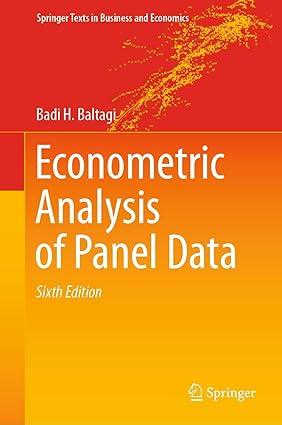Question
Assume a country's health care expenditures (HCE) are financed from two sources: (1) public expenditures (PE) and (2) out-pocket-payments (OOP). Thus HCE = PE +
Assume a country's health care expenditures (HCE) are financed from two sources: (1) public expenditures (PE) and (2) out-pocket-payments (OOP). Thus HCE = PE + OOP. Given the following relationships: (PE/HCE) + (OOP/HCE) = 1 and HCE/GDP = PE/GDP + OOP/GDP, where GDP represents the gross domestic product. Suppose this country currently spends 5 percent of GDP on personal health care and services, and out-of-pocket payments account for 60 percent of the country's total health care expenditures. Use the above-mentioned information and relationships to answer the following questions:
a.) If the government increases funding for personal health care services by adding 1 percent of GDP to health care, and assuming that other things remain constant, that is, the share of GDP spent on health care (HCE/GDP) remains unchanged, will this policy reduce the share of out-of-pocket payments on health care expenditures (OOP/HCE)? Calculate the new values of OOP/HCE under this scenario.
b.) If the new funds injected into the health care sector lead providers to raise less fees, with the result that HCE/GDP increases from 5 percent to 6 percent, will this policy reduce the share of out-of-pocket payments in the health care expenditure? Calculate the new value of OOP/HCE under this scenario.
c.) If the new funds injected into a health care system induce a high rate of health care inflation caused by increased wasteful health care spending, with the result that HCE/GDP increases from 5 percent to 10 percent, will this policy reduce the share of out-of-pocket payments in total health care expenditures? Calculate the new value of OOP/HCE under this scenario.
d.) Based on the scenarios in parts (a) to (c) of this question, explain how a government could use the new funds to promote effective and efficient health care provision so that the new public sector funds lead to a reduction in the share out-of-pocket payments in total health care expenditures. Under what conditions would the government fail to achieve this policy goal, with the new funds being captured by providers in the form of higher income and profits?
Step by Step Solution
3.38 Rating (157 Votes )
There are 3 Steps involved in it
Step: 1
Lets break it down a Initially OOPHCE is 60 so if PEGDP increases by 1 then OOPH...
Get Instant Access to Expert-Tailored Solutions
See step-by-step solutions with expert insights and AI powered tools for academic success
Step: 2

Step: 3

Document Format ( 2 attachments)
663dcc7ee4c65_962036.pdf
180 KBs PDF File
663dcc7ee4c65_962036.docx
120 KBs Word File
Ace Your Homework with AI
Get the answers you need in no time with our AI-driven, step-by-step assistance
Get Started


